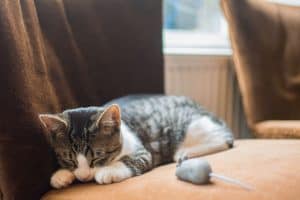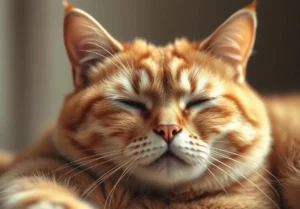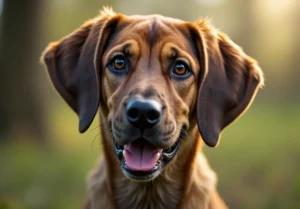Cats are known for their hunting instincts, often bringing home small prey such as mice or birds. However, the sight of a cat hunting a peacock may leave some scratching their heads in confusion. Why would a cat go after such a large and colorful bird? Let’s uncover the reasons behind this behavior.
In the wild, cats are natural hunters, driven by their instincts to pounce on anything that moves. Peacocks, with their vibrant plumage and graceful demeanor, may attract a cat’s attention simply as a potential target for their hunting skills. However, there are several factors that may contribute to a cat’s interest in hunting a peacock, from territorial instincts to a simple desire for a challenging catch.
Natural Instincts at Play
Cats are natural-born hunters, with instincts dating back to their wild ancestors. Their keen sense of sight, hearing, and agility make them expert predators, always on the prowl for potential prey. Whether it’s a mouse, bird, or even a peacock, cats can’t resist the urge to chase and capture. This ingrained behavior is how cats survive in the wild, using stealth and speed to secure their next meal. So when your feline friend sets their sights on a majestic peacock strutting by, it’s simply following their innate instincts, driven by centuries of evolution.
Peacock as Prey
Peacocks are known for their vibrant plumage and elegant displays, making them a sight to behold in any setting. However, these very characteristics can also make them appealing targets for cats on the hunt. The bright colors of a peacock’s feathers can trigger a cat’s predatory instincts, as they are naturally drawn to movement and unique patterns. Additionally, the graceful movements of a peacock, such as its slow strut or sudden bursts of speed, can engage a cat’s predatory instincts and spark a chase. The combination of visual and behavioral cues from a peacock makes it a tantalizing target for a cat looking for some excitement in their hunting endeavors.
- One unique insight: Cats are also attracted to the sounds a peacock makes, as their loud calls can mimic distress signals of potential prey, further enticing a cat to hunt them down.
Remember, when your furry friend decides to pursue a peacock, it’s not just for the thrill of the chase – it’s a reflection of their natural instincts at play. Whether it’s the allure of colorful feathers or the captivating movements, a cat’s drive to hunt down a peacock is a blend of predatory prowess and primal urges.
Territory Defense
When it comes to a cat hunting a peacock, one reason could be territorial defense. Cats are naturally territorial animals, and if they feel like their turf is being invaded by a peacock, they might see it as a threat that needs to be dealt with. Cats can be quite possessive of their space, and hunting a peacock could be their way of asserting dominance and protecting what they perceive as their territory.
Chasing the Challenge
Chasing a peacock might not just be about getting a meal for a cat—it could also be about chasing the challenge. Cats are known for their hunting instincts, and the sight of a colorful, fast-moving bird like a peacock could trigger their predatory drive. The excitement of pursuing a prey that puts up a good fight could motivate a cat to engage in the chase, making the hunt more exhilarating and stimulating for them.
- Enhanced senses: Cats have sharp senses like keen eyesight and acute hearing that make stalking a peacock an appealing and thrilling challenge.
- Instinctual behavior: Hunting is ingrained in a cat’s DNA, and the act of chasing a peacock satisfies their innate predatory nature.
- Physical agility: Cats are agile and nimble creatures, making them well-equipped to pursue and capture fast-moving prey like peacocks.
- Environmental factors: Factors like boredom or lack of mental stimulation can drive a cat to seek out exciting activities like hunting peacocks to alleviate their restlessness and fulfill their natural instincts.
Remember, when dealing with cats and their hunting behaviors, understanding their inherent instincts and motivations is key to addressing and managing their predatory tendencies.
The Hunt in Action
Cats have a natural instinct to hunt, and unfortunately, peacocks can become a target for them. When a cat sets its sights on a peacock, it will typically employ stealth and patience in order to stalk its prey. Moving slowly and quietly, the cat will position itself strategically, waiting for the right moment to pounce. Once the cat has closed the distance, it will launch itself at the peacock, using its speed and agility to chase and catch the bird.
Impact on Wildlife
The hunting behavior of cats can have serious consequences for local wildlife populations, including peacocks. Peacocks are not only beautiful creatures but also play an important role in their ecosystems. When cats hunt peacocks, it can lead to a decline in their numbers, disrupting the balance of the ecosystem. This can have a ripple effect on other species that depend on peacocks for various reasons, such as food sources or habitat regulation.
In addition to the immediate impact on peacocks, the hunting behavior of cats can also pose a threat to conservation efforts aimed at protecting vulnerable species. By preying on peacocks, cats can contribute to the decline of these birds and hinder conservationists’ efforts to ensure their survival. It is important to understand the impact that cat hunting can have on wildlife and take steps to mitigate this threat through responsible pet ownership and conservation practices.
Preventing Encounters
Cats are natural hunters, and their curiosity can lead them to pursue peacocks and other wildlife. To prevent these encounters and protect both your cat and local wildlife, consider keeping your feline friend indoors, especially during dawn and dusk when hunting instincts are heightened. Providing plenty of interactive toys and environmental enrichment indoors can help satisfy their hunting instincts. Additionally, securing outdoor enclosures or installing motion-activated sprinklers can deter cats from wandering too close to potential prey like peacocks. Remember, a little prevention goes a long way in keeping your cat safe and wildlife protected.
Tips to prevent encounters:
- Use bells on your cat’s collar to alert birds of their presence.
- Create designated play areas indoors to redirect hunting behaviors.
- Consider training your cat to walk on a leash for supervised outdoor adventures.
- Install fences or barriers to keep cats contained in your yard.
- Seek guidance from a veterinarian or behaviorist for further assistance in managing hunting behaviors.
Curiosity and Observation
Contrary to popular belief, a cat’s pursuit of a peacock may not always be driven solely by the desire to hunt. Cats are curious creatures by nature, and their interest in peacocks could stem from a desire to observe or interact with the colorful bird. It’s essential to understand your cat’s behavior and provide opportunities for mental stimulation to satisfy their curiosity in a safe and controlled environment. By engaging your cat in interactive play and offering visual stimuli like bird-watching videos, you can help fulfill their innate curiosity without endangering wildlife.
Remember, a well-stimulated cat is a happy cat, so embrace their natural curiosity while ensuring the safety of other animals in your area.
And always remember, a little understanding goes a long way in fostering a harmonious coexistence between your curious feline companion and the local wildlife.
Unique Prey Preferences
It’s fascinating to note that each cat has its own unique preferences when it comes to hunting. Just like how humans have varying tastes in food, cats also have individual preferences when it comes to their prey. This means that while some cats may find peacocks appealing as targets, others may not be interested in them at all. So, when a cat hunts a peacock, it could simply be because that particular feline finds them to be an enticing prey choice, based on its individual instincts and preferences.
Interesting Facts
Cats have a natural instinct to hunt, stemming from their ancestors who were wild predators. This instinct is deeply ingrained in their DNA, driving them to stalk and capture prey. When a cat hunts a peacock, it’s not just about the act of hunting itself, but also about fulfilling their natural predatory instincts. Interestingly, cats have a high success rate in their hunts, with studies showing they are successful in catching their prey in nearly one-third of their attempts. This showcases the remarkable hunting skills that cats possess, making them efficient predators in the animal kingdom.
Additional Unique Insight: Cats have a specialized hunting technique that involves a combination of stealth, patience, and agility. When a cat targets a peacock, it employs these skills to stalk and ambush its prey, showcasing the complexity of their hunting behavior.
So, the next time you witness a cat hunting a peacock, remember that it’s not just a random act, but a reflection of their innate instincts and individual preferences. Understanding these factors can offer valuable insights into the intricate relationship between cats and their prey in the wild.
Alex, a passionate animal lover, has experience in training and understanding animal behavior. As a proud pet parent to two dogs and three cats, he founded AnimalReport.net to share insights from animal experts and expand his knowledge of the animal kingdom.




